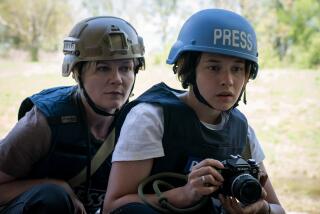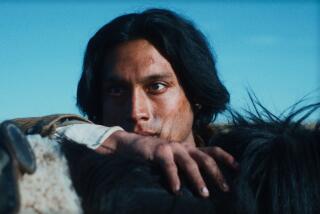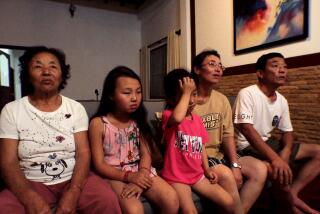NONFICTION - Oct. 4, 1992
BEYOND THE KILLING FIELDS photographs by Kari Rene Hall, text by Kari Rene Hall and Josh Getlin, with a message from the Dalai Lama. (Aperture: $40; 216 pp.)
âWhere there is no vision, the people perish.â
--Proverbs 29:18
Powerful photography changes the way we see the world. It also can show us a world in need of change. In âBeyond the Killing Fields,â Kari Rene Hallâs photographs are a window into a room without doors; they offer us the gift of vision.
Since 1979, several hundred thousand Cambodians have fled their homeland to refugee camps just across the Thai/Cambodian border, escaping the civil war that has pitted three factions, including the Khmer Rouge, against the Vietnamese-installed government in Cambodia. The camps are now home to more than 250,000 people. More than a million others never made it. They were killed by the Khmer Rouge in the Killing Fields between 1975 and 1979.
âBeyond the Killing Fieldsâ takes us to Site 2, the largest refugee camp in Thailand, whose nearly 200,000 residents are lucky only to be alive. More than 3,000 are amputees, victims of countless minefields surrounding the area. Nearly half the population is under the age of 14--the camps have one of the highest birth rates in the world. Many of the children have spent their whole lives in the camps. Small groups of dedicated volunteers from around the world--doctors, nurses, U.N. workers and others--try to make a difference, a formidable task.
The refugeesâ lives are lives of violence, despair, crime, boredom and fear: Fear of death from the frequent artillery attacks from across the border. Fear of never again seeing beyond the barbed wire, or returning to their homeland. Fear that the world has forgotten they exist. They are people lost on the sidelines of a political chess game--250,000 human pawns. Yet some still remain hopeful in the face of hopelessness, hopeful that soon they will see their homes again and be repatriated.
In the beginning of the book we meet Soeurth Tha, a man who, in a drunken rage, has just killed his wife and 6-year-old daughter with an ax. All he can tell the camp judge is, âA devil came into my head--it was magic. I want my family back, but I do not want to live here anymore. This camp, it is not a normal place to live.â
The rest of the book shows us the lives of a displaced people, for whom daily life is an ordeal. The beautiful, haunting, and sometimes painfully poignant photographs tell the story superbly. They are paired in an excellent layout with the thoughtful text by Hall and journalist Getlin. The book ascends to the highest levels of photojournalism, a term often used too liberally. It is a book that defines the term.
âBeyond the Killing Fieldsâ closes with a song by Chan Peov, an amputee soldier to whom the photographer dedicates a chapter earlier in the book. Here is a part of that song:
Why was your life so short, dear friends, in the Province of Kohkong?
I am burning with grief.
We shared love for one another, but karma has divided us. I pray that your souls have
found peace.
Why do I have this never-ending sorrow? Why is the sea so salty? Why are we born only to die?
âBeyond the Killing Fieldsâ is also a song--of love for a lost people--sung in photographs and words, so that the world will not forget them.
More to Read
Sign up for our Book Club newsletter
Get the latest news, events and more from the Los Angeles Times Book Club, and help us get L.A. reading and talking.
You may occasionally receive promotional content from the Los Angeles Times.






